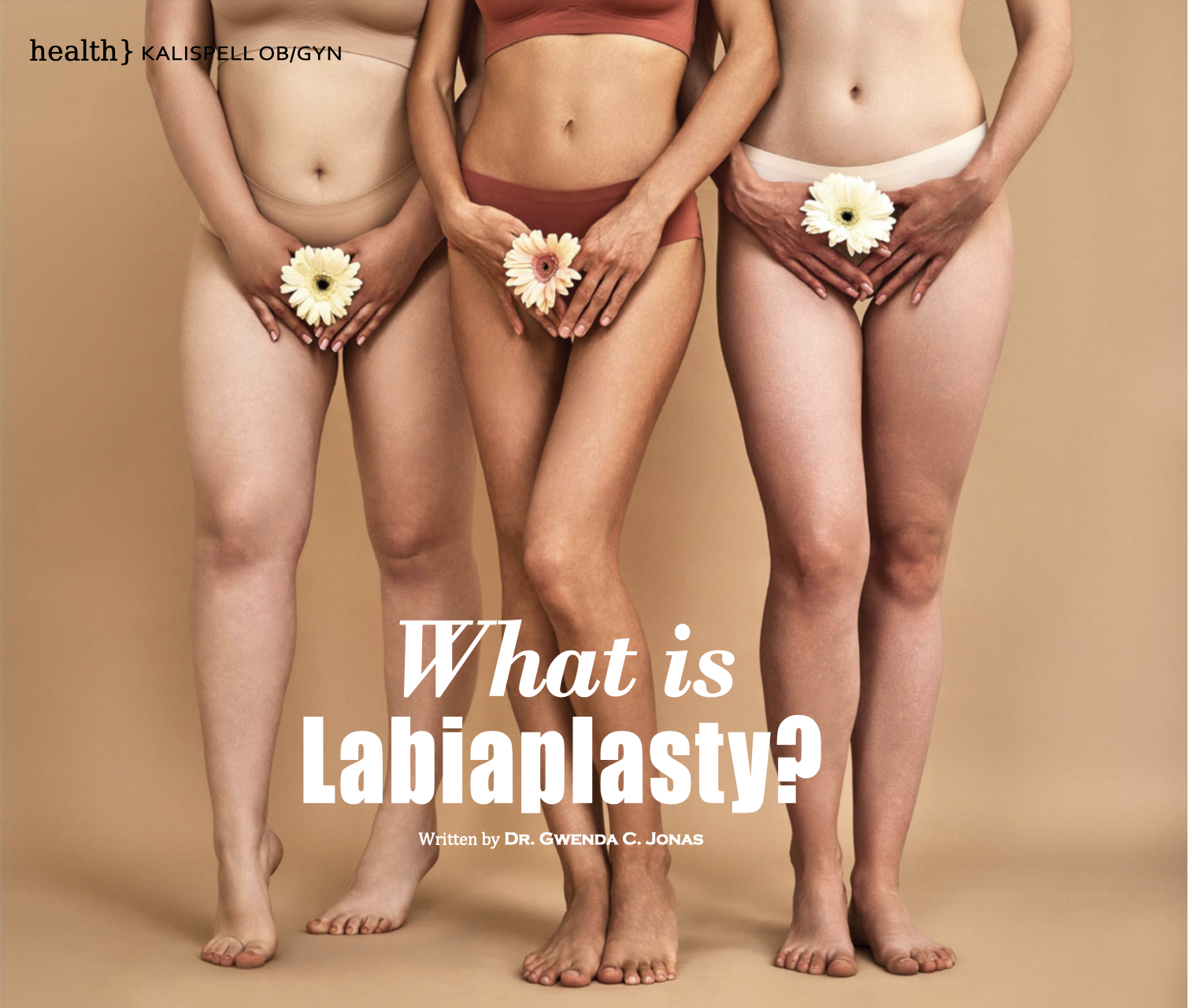What is Labiaplasty?
Have you heard the term labiaplasty and been unsure, and frankly a little afraid, to ask what people are talking about? You are not alone! Labiaplasty is a procedure in which the inner folds of skin nearest the vagina are surgically altered. This most often involves removal of a labial portion considered unusually enlarged or elongated. It is often done due to pain with exercise or intercourse, difficulty with cleanliness during periods or urination, increased infection or irritation, discomfort while wearing certain clothing and sometimes for cosmetic concerns. The number of Labiaplasty procedures performed in the US has increased drast ically over the last decade. It is felt that perhaps the increasing number of women who utilize genital hair removal and therefore visualize their labia in addition to increased accessibility of vulvar images online may have led to this increase. It is also likely that increased knowledge of the procedure’s availability has led women with the symptoms listed above to discuss the surgery with their gynecologic provider and access treatment.
Let’s begin with understanding normal female anatomy. There is a great deal of misinformation propagated online as to what is normal female genital anatomy. In some spaces, we as women are led to believe that if our labia do not look a certain way they are abnormal, and we should be ashamed and seek a “cure.” Often it is implied that if labia appearance is not prepubescent (with labia minora not visible beyond edges of the labia majora) then we are abnormal and that this may lead to lack of sexual satisfaction for us or our partner. It is also implied that if we have this surgically repaired, we will experience improved sexual function. These claims are false.
It is important as women that we realize that our labia, both the larger outer folds (labia majora) and smaller inner folds (labia minora) come in a wide variety of normal shapes, sizes and colors. Sometimes the sides are not exactly even. The labia minora may extend beyond the larger labia majora or they may not. It is also normal for our labia to change in shape and color throughout our lifespan; we may notice changes throughout puberty, after childbirth and during the menopausal transition. There is no one correct appearance and no agreement about what constitutes enlarged, or hypertrophied, labia. In fact, there is at least one entire book dedicated to images of all the variations of normal female genitalia and at least one art installation that includes plaster casts of a myriad of labia of different shapes and sizes. Difference is normal. No intervention is necessary if our anatomy does not cause painful or irritating symptoms.
Most women who seek care for labiaplasty experience physical symptoms or a combination of physical symptoms and poor body image and sexual self-esteem issues as it relates to their labia.
Now let’s examine possible symptoms of labial hypertrophy more closely. Often riding a bike or horseback riding may cause pain. During intercourse an elongated labia may get pulled up into the vagina or twisted painfully. To be able to wear certain clothes, some women may need to “roll up” an elongated labia to tuck it into clothing. Occasionally, wearing a bathing suit may be difficult as labia may “escape”. During menses or urinat ion, excess tissue may make it difficult to wear tampons and pads or it may be diff icult to effectively clean the tissue while on your period or after urination. If excess tissue remains wet, increased irritation, inflammation and infection may occur. Some women who notice enlargement or elongation of their labia feel less attractive to their partners which may affect intimacy. Most women who seek care for labiaplasty experience physical symptoms or a combination of physical symptoms and poor body image and sexual self-esteem issues as it relates to their labia.
So what options are available if you experience these symptoms? Non-surgical methods that may help with symptoms include supportive underwear, use of lubricants or emollients placed on the labia, and arrangement of tissue during exercise and intercourse. When these are not adequate, surgery may be appropriate. One important consideration is that if a woman is under the age of 18 there are federal legal restrictions regarding laGwenda C. Jonas, MD, FACOG is a board-certif ied OB/GYN who has practiced with Kalispell OB/ GYN since 2001. bial surgery. It may only be done for ongoing irritative symptoms or pain that, in the physician’s opinion, require surgical intervention. There is also some ongoing controversy in the medical community regarding strictly cosmetic labiaplasty, however, some would compare it to breast reduction which is not controversial. Labial surgery for symptoms has become more common. That said, there are no studies with large numbers of women addressing whether most women are happy with their results or what percentage of women have a complication from the surgery.
Labiaplasty is generally an outpatient, or occasionally in-office, procedure. It may be done in a variety of ways as no surgical method has been proven to be better than other methods. Most commonly, elongated edges may be trimmed or a wedge of tissue may be removed. Following the procedure, pain medications may be needed for several days to a week. It is best to take time off work and to avoid strenuous activities until your surgeon has re-examined you and given you the all-clear to return to normal activities. There are risks associated with this surgery just as with any surgery. Most common, though rare, are bleeding, infection, development of a large bruise (hematoma), stitches breaking down (dehiscence), pain with intercourse, loss of sensation, scarring, failure to achieve the results you desire, and possible need for further surgery.
If you experience bothersome symptoms that you believe are related to enlargement or elongation of your labia, you should discuss these concerns with your Obstetrician Gynecologist (Ob Gyn). If they do not perform labiaplasty they may refer you to someone who does so that you may undergo an exam and then have an informed conversation about the procedure, its risks, possible benefits and if it is an appropriate option for you. If you do not have an Ob Gyn, we would be happy to see you at Kalispell Ob Gyn. Please call to make an appointment for this or any other gynecologic concerns.

